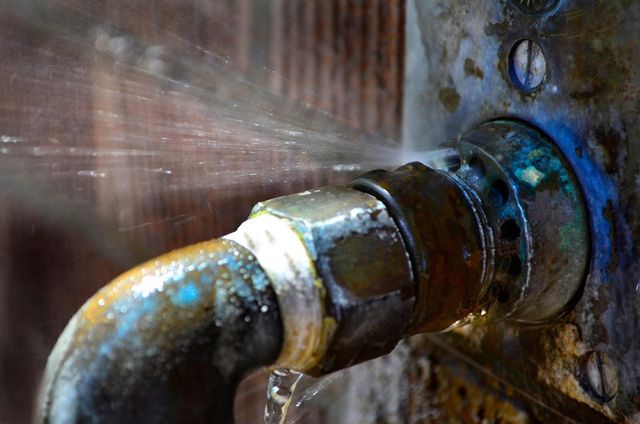6 Ways to Locate Concealed Water Leaks in Your House
6 Ways to Locate Concealed Water Leaks in Your House
Blog Article
We've discovered this great article about Top leak detection hacks down the page on the net and thought it made good sense to write about it with you on my blog.

Early detection of dripping water lines can mitigate a prospective calamity. Besides saving you cash, it will certainly lessen the stress and irritation. The moment you locate a leakage, calling your plumber for fixings is the most effective option. Some small water leakages might not be noticeable. Below are some hacks that assist if you can not find it with your nude eyes.
1. Check Out the Water Meter
Every house has a water meter. Checking it is a guaranteed way that assists you find leakages. For beginners, shut off all the water resources. Make sure no person will certainly purge, make use of the tap, shower, run the cleaning equipment or dish washer. From there, most likely to the meter and also watch if it will certainly transform. Given that no one is utilizing it, there need to be no activities. That suggests a fast-moving leakage if it moves. Also, if you discover no changes, wait an hour or more and inspect back once again. This indicates you may have a slow leak that can also be underground.
2. Examine Water Usage
Evaluate your water expenses as well as track your water usage. As the one paying it, you ought to notice if there are any kind of inconsistencies. If you find sudden changes, despite your intake coinciding, it indicates that you have leaks in your plumbing system. Remember, your water expense ought to drop under the exact same range on a monthly basis. An unexpected spike in your bill shows a fast-moving leak.
Meanwhile, a consistent increase each month, even with the exact same routines, shows you have a sluggish leakage that's also gradually rising. Call a plumber to extensively check your residential or commercial property, particularly if you really feel a warm area on your flooring with piping underneath.
3. Do a Food Coloring Test
When it comes to water intake, 30% comes from commodes. If the color somehow infiltrates your dish throughout that time without flushing, there's a leak in between the storage tank and dish.
4. Asses Outside Lines
Don't forget to check your exterior water lines too. Should water permeate out of the link, you have a loose rubber gasket. One tiny leakage can throw away bunches of water and also spike your water bill.
5. Analyze the scenario as well as check
Homeowners must make it a behavior to inspect under the sink counters and also even inside closets for any kind of bad odor or mold growth. These 2 warnings suggest a leakage so punctual focus is needed. Doing routine examinations, even bi-annually, can conserve you from a major trouble.
Check for discolorations and deteriorating as the majority of home appliances and also pipelines have a life expectations. If you suspect leaking water lines in your plumbing system, don't wait for it to intensify.
Early discovery of dripping water lines can reduce a prospective catastrophe. Some little water leakages might not be noticeable. Examining it is a proven means that aids you discover leaks. One tiny leak can waste tons of water and spike your water bill.
If you suspect leaking water lines in your plumbing system, don't wait for it to escalate.
Tips for Detecting Hidden Plumbing Leaks
Check for Signs of Water Damage
We recommend that you check the following places for evidence of water damage:
Near where you store your water heater
Around your sump pump
In areas where pipes are visible
Underneath cabinetry or a vanity beneath a sink
Where your outside hose bib isIf water damage is present, you may also notice mold and/or mildew or smell a foul or musky odor. You might also be able to hear the sound of water running where it shouldn’t be.
Perform a Water Meter Test
One of the easiest ways to determine whether you have a hidden leak on your property is to test your water meter. Turn off all appliances in that use water and make sure you don’t have any faucets running. Locate your water meter and record the reading on it. Continue to leave everything off for a minimum of two hours and then go back and see the meter reading. If it’s a noticeable difference, chances are you have a hidden plumbing leak.
Monitor Your Outside Usage
As the seasons change, you might use more water to keep your yard lush and green and your flowers blooming. However, it’s important to routinely ensure that your sprinkler or irrigation system is working properly and that any outside faucets are completely off. This way you’re not wasting any water.
Do the Toilet Food Coloring Test
Are you kept up at night because your toilet continues to run? If you’ve noticed your toilet randomly refills, especially when it’s not in use, it could mean you have a defective flapper tank and water will leak into the bowl. Fortunately, there’s an easy (and kind of fun!) way to test whether you’re dealing with this issue. Grab some food coloring and add a few drops into your toilet’s tank. Wait 15 minutes and then check to see whether the water in the bowl is colored. If it is, you have a leak within your toilet and the internal assembly will need to be repaired or replaced.
https://www.carterservices.com/blog/2020/february/tips-for-detecting-hidden-plumbing-leaks/

Do you like reading about Leaking water lines? Post a remark directly below. We will be pleased to know your reactions about this write-up. We hope to see you back again soon. I beg you take a moment to promote this page if you liked it. We appreciate reading our article about Detecting hidden plumbing leaks.
Report this page